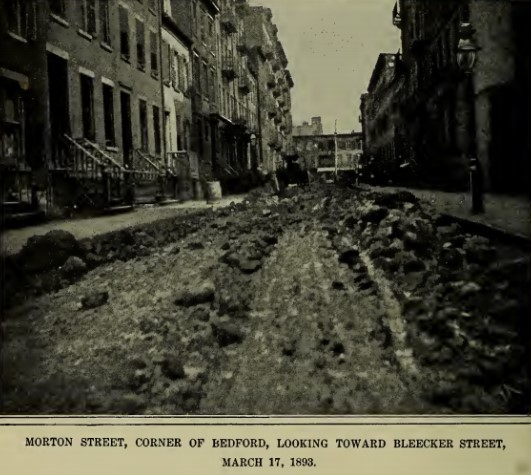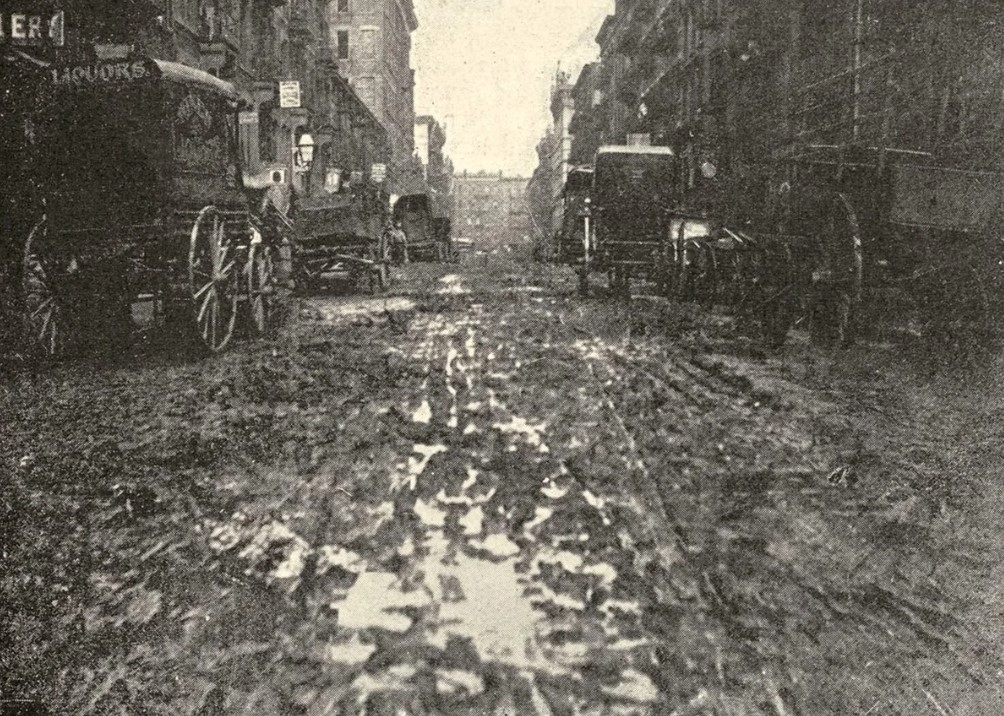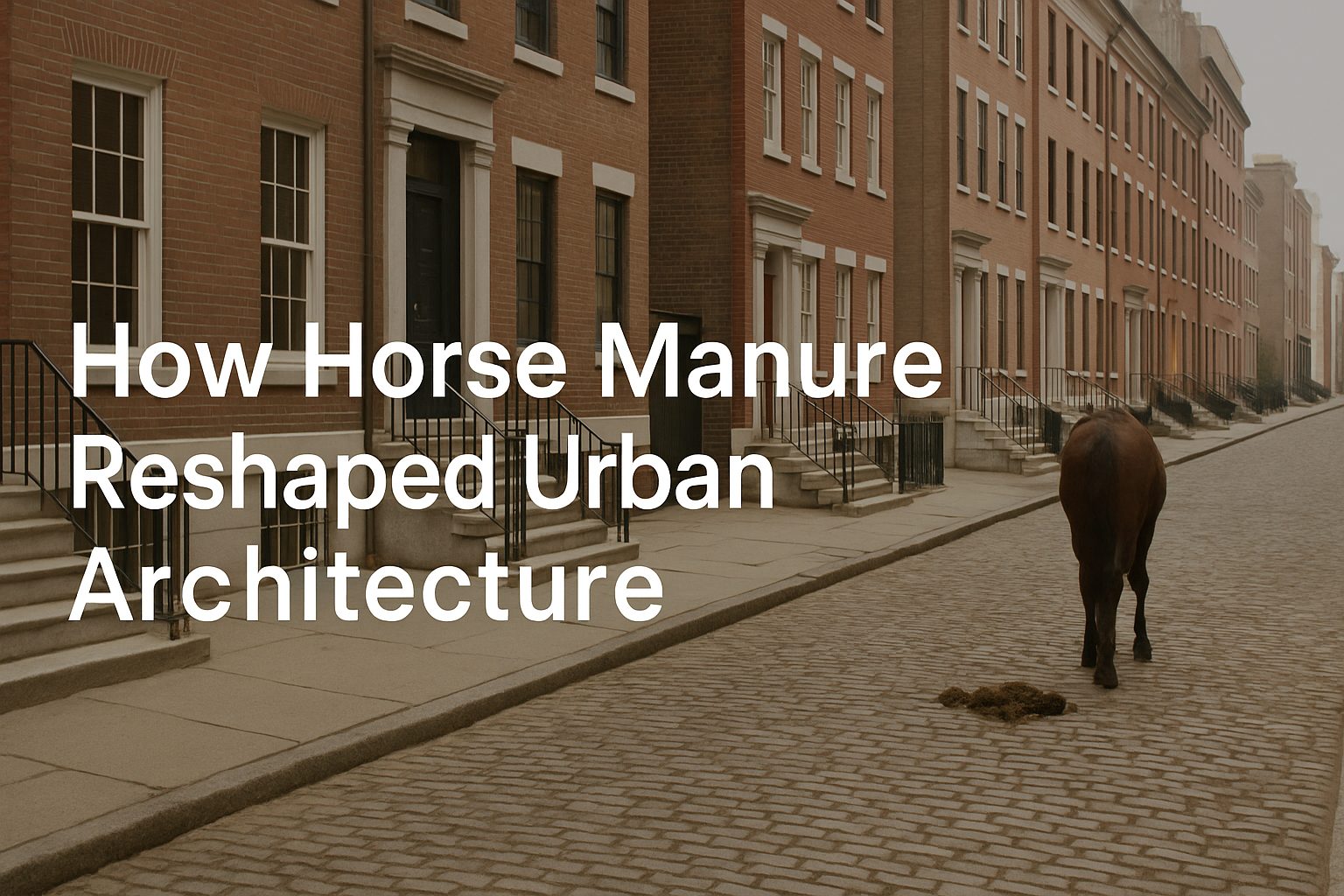Long before traffic jams and parking meters, the real urban congestion problem was far more… organic. In the mid-1800s, horses were the backbone of city transportation—and their manure, the unfortunate side effect, literally changed the way cities were designed and homes were built.
🐴 A Transportation Revolution (With a Messy Side)
For most of history, people walked. But for a few intense centuries, the horse was the go-to for personal and commercial transit. By the mid-19th century, horses weren’t just pulling plows—they were pulling carriages, trolleys, and delivery wagons through the heart of growing metropolises.
As cities like New York, London, and Paris boomed, so did their equine populations. In New York alone, over 62,000 horses once trotted the streets daily. That’s more than 500 tons of manure—every single day.


🚧 Manure Meets Infrastructure
An average horse produces roughly 13 kilograms (about 30 pounds) of waste a day. In a scattered countryside, that’s fertilizer. But concentrated into city blocks? It’s chaos. Horse manure clogged drains, filled alleys, and piled so high it reached first-floor windows in some places. Disease spread rapidly. Streets reeked.
The infamous Great Manure Crisis of 1894 saw London buried under literal tons of waste. In fact, the first international urban planning conference in New York in 1898 was almost entirely consumed by discussions on what to do with all the poop. After three days, the delegates gave up and went home without a solution.
🏗️ Architecture Steps Up—Literally
With piles of manure threatening to breach basement windows, architects began to rethink residential design. The result? Homes with raised entrances and prominent stoops. By lifting main floors above street level, residents avoided the runoff that surged through neighborhoods during rainstorms. While today we see stoops as quaint or decorative, they were originally built as a first line of defense against ankle-deep manure.
Stairs weren’t just fashionable—they were functional.
🚽 The Sewer Solution
Before the automobile swept in to save the day, cities had to scramble for temporary fixes. Sanitation departments were born (New York founded theirs in 1881), armies of sweepers called the “White Wings” took to the streets, and sewer systems underwent massive overhauls.
London began channeling waste into underground systems as early as 1815. Boston followed in 1833. Other cities dragged their feet—Memphis, for example, suffered repeated cholera and yellow fever outbreaks until it finally updated its infrastructure.
🚘 A New Kind of Movement
Ironically, the solution to the manure mountain wasn’t urban planning—it was technology. As automobiles became widespread in the early 20th century, the horse population plummeted, and with it, the mountains of manure. By the 1920s, what had once seemed an insurmountable crisis was… gone.
🧱 The Legacy Beneath Our Feet
The next time you pass a brownstone with a stately stoop or walk up steps into a historic townhouse, you’re witnessing a silent reminder of a time when architecture had to outsmart horse droppings. The manure crisis may be long gone, but the design choices it inspired continue to shape our cities—and our stories.
We love sharing fascinating stories that connect history, architecture, and the world of real estate. If you’re thinking of buying or selling property anywhere in Eastern Pennsylvania, New Jersey, or Delaware, the team at CENTURY 21 Keim is here to help.
📞 Call us at 610-969-7200
📧 Email: c21keim@gmail.com
🌐 Visit: www.Century21Keim.com


 Facebook
Facebook
 X
X
 Pinterest
Pinterest
 Copy Link
Copy Link






